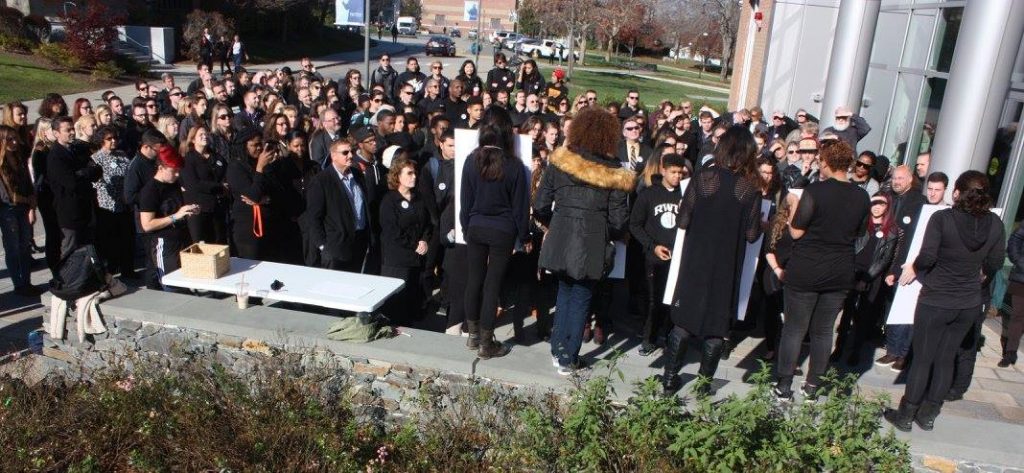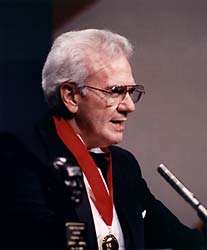Welcome to WordPress. This is your first post. Edit or delete it, then start writing!
me_96uy72p2
Higher Education and Presidential Campaigns: Incompatible Bedfellows? (Part 3)
Is the purpose of college to get a good job or to have a great life?
In the first two parts of this series, I addressed some of the ideas regarding higher education that are being promoted by various candidates for president of the United States. In Part 1, I examined the wisdom and folly of eliminating tuition at public colleges and universities. In Part 2, I raised the inconvenient question of what problem the solution of free tuition is intended to solve – and what unintended consequences might result from such a policy. Now, in Part 3, I want to consider yet another factor that explains why there is such divergence of opinions regarding higher education on the part of our presidential candidates.
Higher Ed and Presidential Campaigns: Incompatible Bedfellows? (Part 2)
Before we choose a solution, let’s identify the problem
In my last post, I considered at some length the pros and cons of tuition-free public higher education, as advocated by some candidates now campaigning to be the next president of our country. After all, the reasoning goes, free tuition has been a long-standing policy in the K-12 sector; why not higher education? Different candidates vary with respect to how generous they are prepared to be, with one advocating a means test and at least a token investment by the students and their families, whereas another wants simply to do away with tuition at public colleges for everyone.
Unfortunately, the candidates are not discussing what particular problem their policy is intended to solve. Surely, in order to be effective, solutions have to derive from a collective agreement on, and understanding of, what problem the solution is intended to remedy – and our presidential candidates appear to have skipped this step.
The presidential election is almost a year away, so we still have time to think more about the problem we want to address before we fall in love with a particular solution.
Higher Ed and Presidential Campaigns: Incompatible Bedfellows? (Part 1)
Let’s examine the merits of the prevailing sound bites on colleges and universities
I have worked as a higher education instructor, researcher and administrator for more than four decades. Over that span, I’ve seen many presidential campaigns, and in almost every case, higher education has not been a plank in the platform of either of the major parties. Those of us in the groves of academe may have been ignored by presidential candidates in the past, but at least we knew that we would not be troubled by them.
Ah, for the good old days!
This year, higher education seems to be a part of every candidate’s agenda. (See, for example, “Punch Lines Versus Polish on Iowa Trail,” The New York Times, Jan. 1, 2016.) The Democratic candidates are focused on making college far more affordable – even tuition-free in the mind of at least one candidate. The Republican candidates are focused on affordability as well, but with much greater emphasis on the need for institutions to reduce their prices and/or the need for Washington to reduce federal financial aid – since some argue that it is the easy availability of federal grants and subsidized loans that permitted colleges to raise their prices so much in the first place (although there are few studies that support that contention, and many that refute it). Finally, at least one candidate is focused on “practical” education (“we need more welders and less [sic] philosophers,” “In GOP Debate, Rubio Again Criticizes Philosophy,” Inside Higher Ed, Nov. 11, 2015).
As the political primaries take place, with the inevitable coalescing behind a single candidate in each major party, it will be interesting to see how these various ideas play out: How will each of them be received by the American public, and which one will emerge as the most important?
‘The Death of America’s Universities’ – Overreaction Reaches New Levels
Let’s not confuse legitimate concerns about equity on college campuses with political correctness
On Nov. 16, students at Roger Williams University organized what they referred to as “BlackOut” (pictured below) – a noontime demonstration in support of the students at the University of Missouri whose protests against the indifference of some senior administrators at the university to claims of racism on the campus led to the resignation of the system president and the campus chancellor.
RWU student leaders spoke and presented a proposed list of action steps they wanted to see taken by our campus and then invited me to speak. The prevailing mood at the demonstration was collaborative and civil – no “demands” were made, and no one’s resignation was sought. I was very proud of our students, and I told them that we would form a representative task force to develop a plan, with timelines and metrics, to address their entirely reasonable concerns. Then we returned to our offices and classrooms to resume the work of giving and receiving a university education. The local newspaper wrote a positive editorial about the event (“RWU students’ intelligent requests,” Bristol Phoenix, Nov. 19, 2015).
The New American College – Two Decades Late
Perhaps the late Ernie Boyer’s argument – service to society as the primary mission of higher education – hasn’t been abandoned altogether
The late Ernest Boyer was a hugely influential voice in higher education policy during the latter part of the 20th century. He was the chancellor of the giant State University of New York (SUNY) system, before becoming the U.S. commissioner of education (a position that later was changed to “secretary”); he ended his career as the president of the Carnegie Foundation for the Advancement of Teaching.
Boyer was very comfortable taking on the higher education establishment and calling out its weaknesses as he perceived them. For example, he believed that American higher education began to lose its way after WW-II, when the National Science Foundation was established (1950) and the National Institutes of Health were greatly expanded, making federal research dollars available, in increasingly larger amounts, to campus-based researchers. Boyer was visibly concerned that the growing emphasis on university-based research was coming at the expense of the historic emphasis on high-quality undergraduate education.
Higher Education in America: A Way Forward
To change the conversation, colleges must actively and openly address society's concerns
It is becoming increasingly difficult to pick up a newspaper, open a magazine, or walk into a bookstore without being confronted with yet another screed about the problems of higher education in America, each one seemingly more shrill than the last. With book titles such as Academically Adrift, or American Higher Education in Crisis?, or Why Does College Cost So Much?, it is no wonder that the parents of a prospective college student are confused and frustrated as they enter the season of campus visitations.
By way of welcoming the start of college this fall, The New York Times recently devoted its entire Sunday magazine (Sept. 13) to a series of articles collectively entitled Collegeland. If anyone thought it was safe to go back into the academic waters, these articles will frighten them back to the beach before they get their ankles wet.
There is no question that problems abound in the world of American higher education; they are serious, and they need to be addressed. But the good news is that genuine efforts are under way at many colleges and universities to implement solutions to these problems. Not every college is deaf to the voices of criticism. Consider three of the most vexing concerns:
Does Wealth Inequality among Universities Pose a Threat to the American Economy? (Part 5)
A New Course Heading for the Ship of State
For the past several weeks, we have been considering the ramifications of a Moody’s study done in April of this year that noted a widening gap in wealth between a handful of very rich colleges and universities, and all of the other institutions of higher education in America.
Even as I was writing the posts in this series, something occurred that dramatically underscored my concerns about the wealth gap in higher education. John Paulson, a hedge fund manager and multibillionaire, gave $400 million to the world’s richest university: Harvard.
Wow! That’s an enormous amount of money! A gift of that size would have instantly placed the beneficiary among the richest 200 institutions of higher education in the country – even if that institution’s endowment had been zero when the gift was received. But think about this: John Paulson’s gift of $400 million is, on the one hand, the largest gift in Harvard’s 379-year history; but, on the other hand, it increases Harvard’s endowment by a little more than one percent, and, after taxes, it represents less than two percent of Paulson’s net worth. Isn’t it extraordinary that a gift of $400 million can be made with so little sacrifice on the part of the donor, and have so little impact on its recipient? And since $400 million is equal to the total annual income of all of the people in a city with a population of 25,000 (median family income in America is just over $51,000; assume three people per family, on average), this gift to Harvard epitomizes the outrage of many that our economic rewards system is completely out of balance.
Does Wealth Inequality among Universities Pose a Threat to the American Economy? (Part 4)
Pros & Cons: How America Funds Higher Ed
In the first three parts of this series, we initially looked at a report from Moody’s regarding the growing separation by wealth between a small number of extraordinarily rich colleges and universities and the very large number of institutions that are heavily dependent on tuition to fund their annual budgets. Subsequently, we reviewed the history of wealth acquisition by the very rich campuses and noted that it was a relatively recent phenomenon. Then we examined the consequence of this imbalance in wealth in terms of the long-term viability of tuition-dependent colleges and universities.
Now, in Part 4, we will consider the relationship between historic patterns of public and private financial support for higher education, and the current very high level of frustration, on the part of parents, politicians and pundits, regarding the diminishing opportunities for young people to receive a college education that is both excellent and affordable.
Does Wealth Inequality among Universities Pose a Threat to the American Economy? (Part 3)
It’s Not a Good Thing to Be Other Than a King
In Part 1 of this series, I examined a recent report from Moody’s that predicted growing economic separation between a handful of the wealthiest universities and the rest of higher education. Media coverage of the report did not examine the consequences to either higher education or the American economy, should Moody’s prediction prove true, nor did the coverage assess the accuracy of the analysis, something that I sought to address.
In Part 2, I noted that extreme wealth in a handful of famous universities was not true historically, but is, instead, a relatively recent phenomenon.
Now, in Part 3, we look at the other side of the story: What does it mean to higher education in general that wealth is so unevenly and inequitably distributed across the 4,000-plus colleges and universities in this country? And why isn’t there greater concern about this extreme inequity on the part of the American public?


